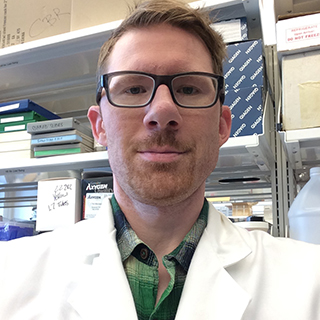Mikael Klingeborn, PhD, is a senior research associate in the Department of Ophthalmology at Duke University in Durham, North Carolina. He completed postdoctoral research at Rocky Mountain Laboratories, in Hamilton, MT, which is part of the National Institute of Allergy and Infectious Diseases, where he investigated the role of the misfolded form of prion protein in the cause of prion diseases. His laboratory uses highly polarized and differentiated cultures of RPE cells as a tool to study how oxidative stress impacts the normal function of these cells. His research focuses on the role of extracellular vesicles released from RPE cells in the development of dry AMD. More specifically, his laboratory is interested in the role of these RPE-released vesicles in the regulation of the innate immune system in AMD and the formation of sub-RPE protein/lipid deposits known as drusen.
"Detailed characterization of extracellular lipid vesicles (EVs) secreted from RPE cells under conditions of physiological stress is both relevant to dry AMD pathogenesis and may have the potential to identify novel pathological mechanisms. These mechanisms may present novel drug targets for dry AMD.
The support of BrightFocus and its donors is crucial for a junior scientist, such as myself. By supporting me in my early research, BrightFocus and its donors will lay the foundation for further studies pursued via larger grant funding from the National Institutes of Health (NIH) or other organizations. Without the support from BrightFocus, it would not be possible to secure these larger research grants needed to continue the work towards a treatment of dry AMD.
We predict that this line of inquiry will enhance our understanding of RPE biology towards the goal of identifying novel drug targets, which will be further tested in animal models of dry AMD. Ultimately, these studies could lead to novel drugs for treatment of dry AMD in patients. An additional possible outcome of these studies is that individuals with dry AMD may have unique RPE-derived and/or choroid-derived EVs, compared to healthy controls. Thus, these findings may serve as novel potential biomarkers for early dry AMD diagnosis.
Since there is currently not only no cure, but no drug treatment, for dry AMD, the potential combination of a novel tool for early dry AMD diagnosis with novel drug(s), would alleviate a significant amount of suffering and offer a substantial increase in quality of life for dry AMD patients. Most of us have family or friends who have been affected directly or indirectly by AMD, and have seen how the loss of vision affects their quality of life. I, too, have family members affected by AMD, and this is one of the main driving forces behind my quest to find a new treatment, a method for earlier diagnosis, and a way to predict one’s risk of developing the dry form of the disease."
